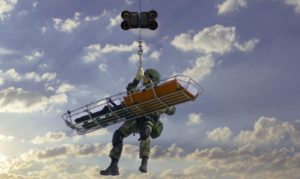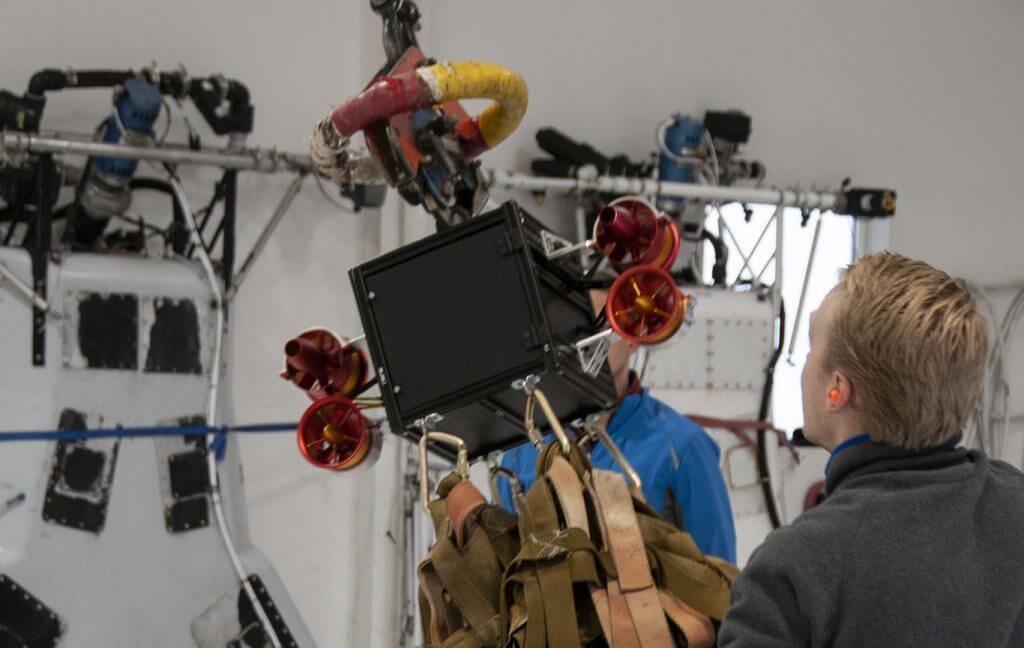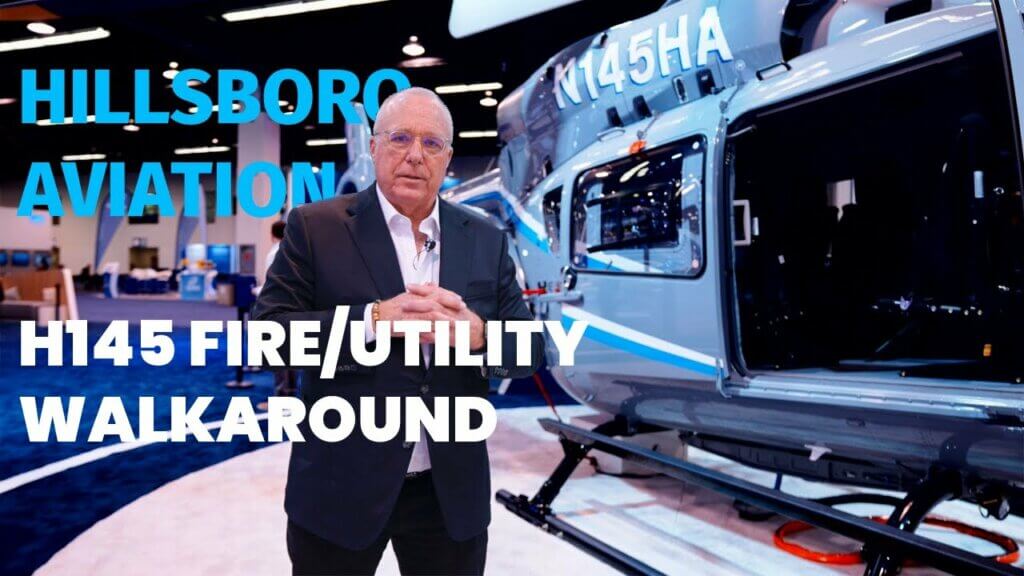Vita Inclinata Technologies has signed a Cooperative Research and Development Agreement (CRADA) with the U.S. Army Aeromedical Research Laboratory (USAARL) for research and flight testing of the company’s Load Stability System (LSS).

The LSS is a self-contained, autonomous suspended load stabilization device that uses thrust produced by four electric ducted fans to eliminate the swing during helicopter hoist and sling load missions. Under the CRADA, Vita Inclinata will work with USAARL to establish the airworthiness criteria and operational envelope of the LSS to prepare it for deployment with U.S. Army missions.
“Currently, taglines have really been the only solution to hoist rescues,” said Caleb Carr, CEO of Vita Inclinata. “So the main question here is, can we throw the LSS into every type of operational environment that the U.S. Army and other military agencies and private agencies operate within? We are confident that we can.”
Carr added that the U.S. Army is not the only agency that is interested in the LSS. Vita Inclinata is currently under two U.S. Air Force contracts to develop the system, and is also working with the Pararescue Group based in California to continue to refine the system.
“Working together with the Army and with the Air Force, [and] actually collaborating multiple agencies together… not only has it been an exciting time, but I basically get to wake up every day and figure out how to save lives — and play with helicopters,” said Carr.
Vita Inclinata’s LSS has been developed in two configurations: the LSS-HR (Hoist Rescue) for rotary-wing search-and-rescue (SAR) operations; and the LSS-SL (Sling Load) for helicopter sling load operations.

With the LSS-HR, the hoist cable can slide through the center of the LSS, which attaches to the cable using a series of rubber components to put pressure on the cable without wearing its integrity. Carr said this attachment method is being tested both in the lab and in operational settings.
The LSS-SL attaches at the bottom of the longline hook, and the load is then connected to the weight-bearing LSS.
While currently in the prototyping/refinement stage, the LSS has so far been flight tested on a Robinson R44 helicopter. The next flight test with the LSS is expected to take place on Feb. 14 in Seattle, Washington, with a Bell UH-1 Huey, followed by a flight demo on March 7 at this year’s HAI Heli-Expo in Atlanta, Georgia, with a Bell 407HP.
The system that will be unveiled at Heli-Expo has been tested to manage weight up to 5,000 pounds, but Carr said that number can be scaled up to roughly 20,000 pounds by changing the fans on the system to deliver a higher thrust capacity.
“We’ve actually been able to test the system in 111-knot winds [in a laboratory] so far with full operational success,” Carr told Vertical. “Now it’s just a matter of continuing to get that validation with an independent agency — that being the U.S. Army.”
Vita Inclinata was founded in 2012; CEO Carr was inspired to create the LSS after a search-and-rescue mission ended in tragedy when a UH-60 attempted to lower a basket using a hoist system to perform a rescue, but could not get it through the trees due to swinging. “I’ve been working since 2012 to basically create a solution to prevent those kinds of deadly scenarios,” he said.
Vita Inclinata and USAARL will work together to qualify the LSS as safe to fly for all medevac operations. Carr said the results from the USAARL agreement would also allow the company to streamline other certification processes moving forward.









